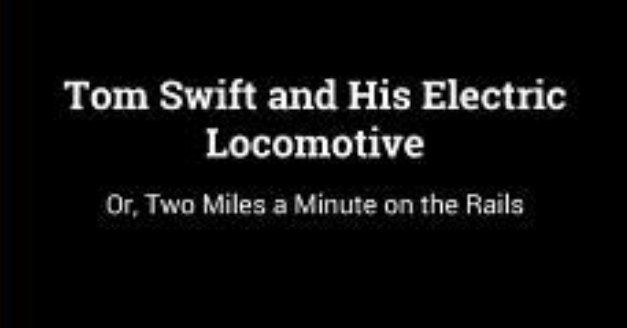CHAPTER II — Tom Swift and His Electric Locomotive
byCHAPTER II – Tom Swift and His Electric Locomotive continues with tension simmering beneath the surface, as Tom finds himself confronted by a masked thug under the shadow of an archway. The moment is brief but intense—Tom is held at gunpoint, forcibly searched, and has his wallet stolen. Despite the danger, he remains unnerved, suspecting the act was tied not to petty theft but to larger industrial interests. This calculated robbery aligns with the warning given by Mr. Richard Bartholomew about a Western spy potentially sent by Montagne Lewis. The link becomes clearer when Tom realizes the thief was specifically looking for something—his design notes, perhaps—rather than valuables. This reveals an early thread of corporate espionage, raising the stakes of the locomotive project he’s about to undertake.
Tom’s reaction is grounded in the experience gained from past inventions and adventures. Reflecting on his earliest exploits—from building motor cycles to submarines—Tom now recognizes threats not just as personal danger but as challenges to technological progress. He understands that true innovation often invites sabotage, especially when it disrupts established industries. The H. & P. A. Railroad’s financial troubles have made Bartholomew desperate for a breakthrough, and Tom’s proposal for a high-speed electric locomotive offers exactly that. The economic burden of steam engines, driven by the volatile cost of coal and oil, makes electrification a bold but necessary leap. Though shaken, Tom’s attention quickly returns to this mission, recognizing its urgency not only for the railroad’s survival but for setting a new standard in railway transport.
The robbery, though unsettling, also brings clarity. Tom concludes that the spy’s mission is not about personal harm, but about halting progress. That’s why nothing else was taken—only what might be mistaken as technical documentation. Unbeknownst to the thief, Tom uses a complex shorthand understood by very few, rendering the stolen papers practically useless. This moment highlights not just Tom’s foresight, but also the intellectual protection he instinctively practices. In modern terms, it’s equivalent to encrypting sensitive data to prevent corporate leaks—an idea as relevant today as it was in Tom’s world. His discipline in safeguarding ideas ensures the real value of his work remains secure.
As Tom processes the event, his mind returns to the possibilities ahead. The electric locomotive, designed for two miles a minute, would revolutionize not just speed but the entire economics of railroads. If successful, the Swift Construction Company could set the benchmark for electrified transport in rugged environments like the Pas Alos Range. Current electric locomotives—such as the widely referenced Jandel patent—have proven insufficient in performance. Tom’s vision goes beyond mere mechanical improvement; he wants to develop a system that adapts to terrain, minimizes power loss, and optimizes battery life or dynamic grid usage. It’s a forward-thinking approach that hints at concepts resembling regenerative braking or power redundancy, long before such systems became mainstream.
With the thief gone and the threat still lingering, Tom resolves to discuss his next steps with Ned Newton and his father. It’s not just about securing a contract—it’s about creating the prototype that will prove the doubters wrong. He considers consulting engineers, acquiring testing grounds, and preparing for a secure workspace, shielded from prying eyes. Tom knows this project won’t just be measured in speed or design specs; its real success will depend on staying one step ahead of those who wish to suppress innovation. That realization strengthens his determination. Even danger becomes just another challenge to overcome with ingenuity and strategic thinking.
Throughout the chapter, there’s a noticeable shift in tone. Adventure gives way to industrial espionage, and youthful curiosity transforms into mature resolve. Tom isn’t just an inventor anymore—he’s a guardian of innovation against forces that thrive on disruption. What he builds has the potential to change how nations move and connect. The electric locomotive becomes not just a machine, but a symbol of transformation—of clean energy, efficient transport, and technological vision. For readers, this chapter sets the foundation for a thrilling narrative that blends mechanical genius with suspense, highlighting the price—and the power—of progress.

